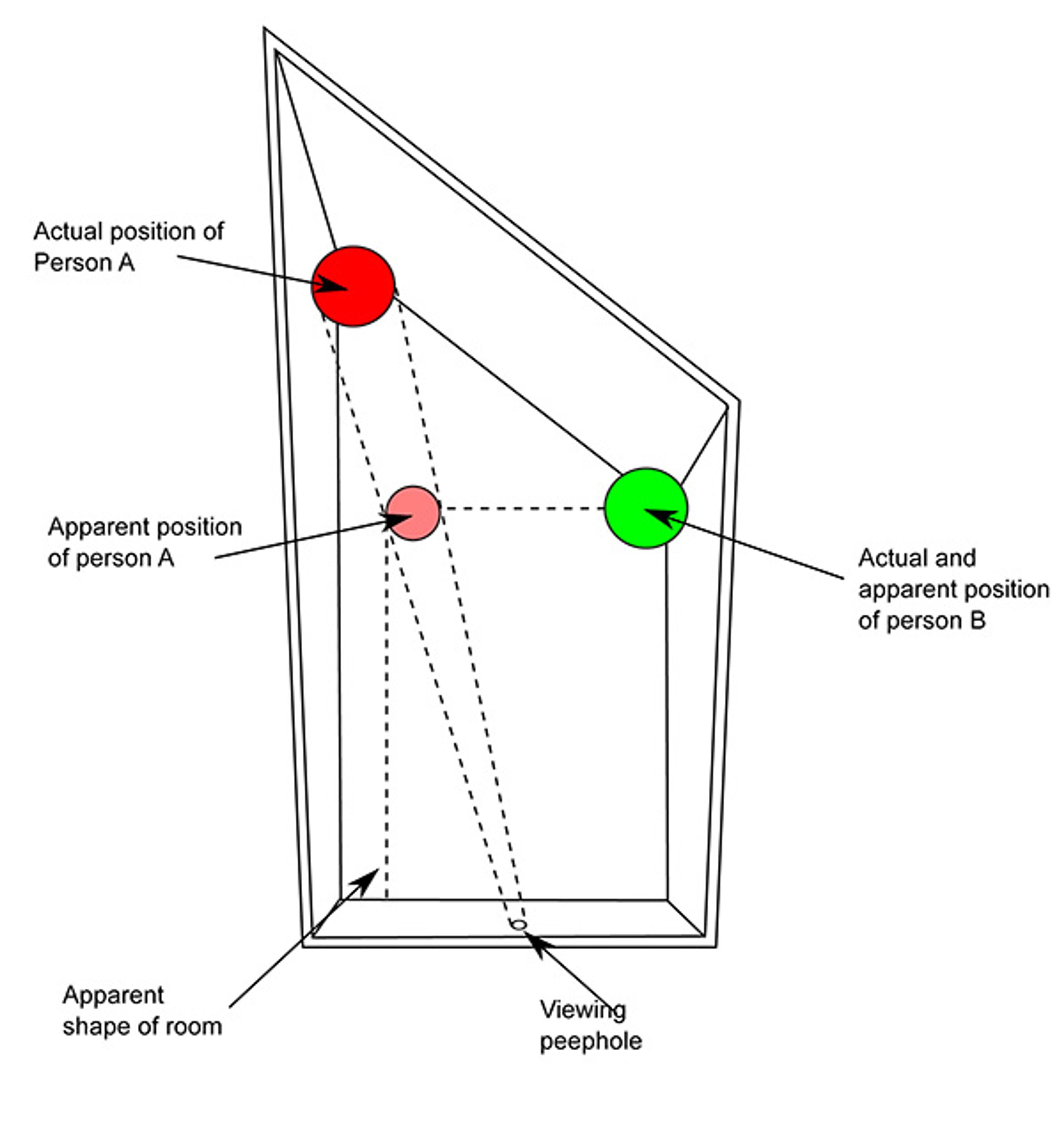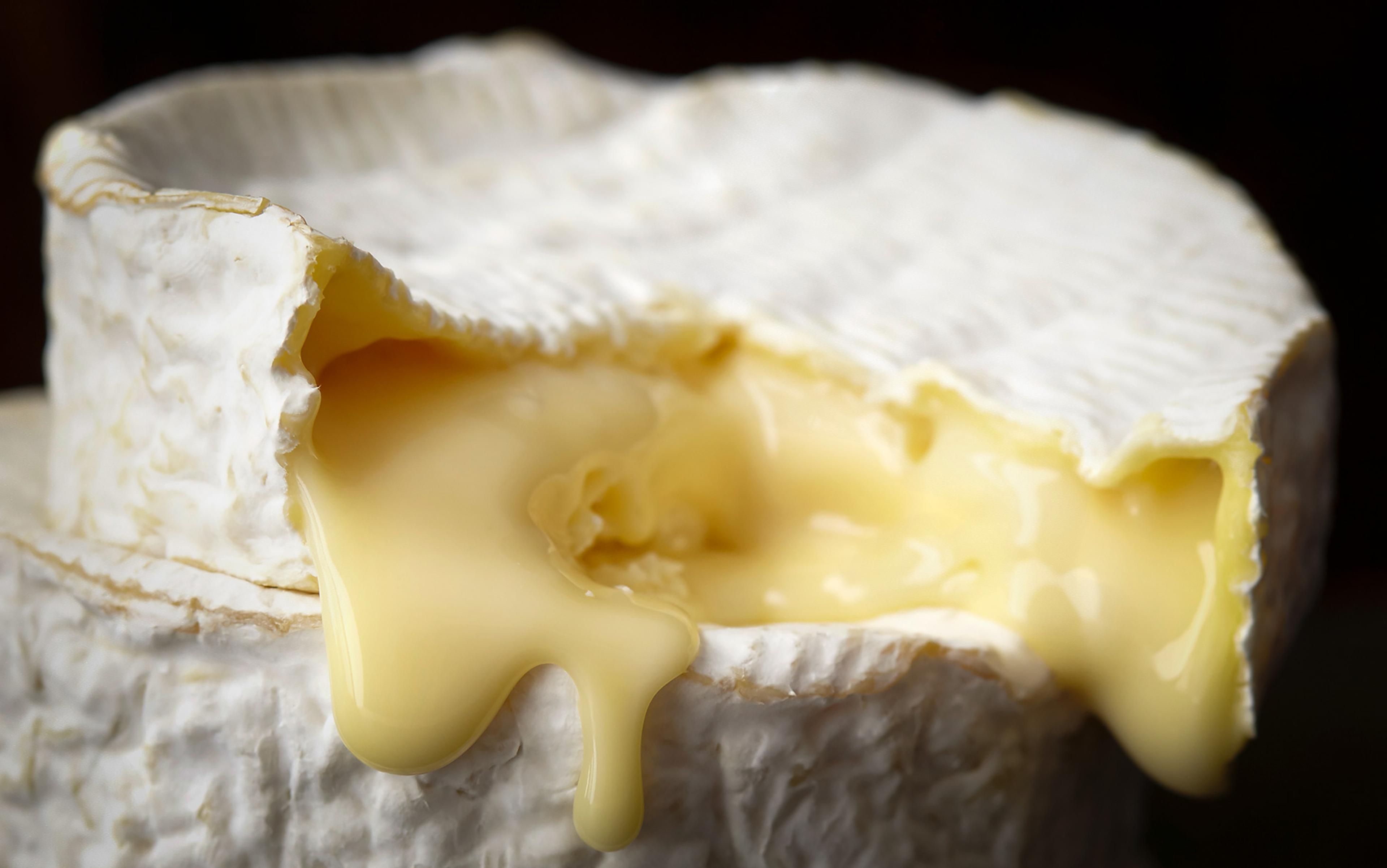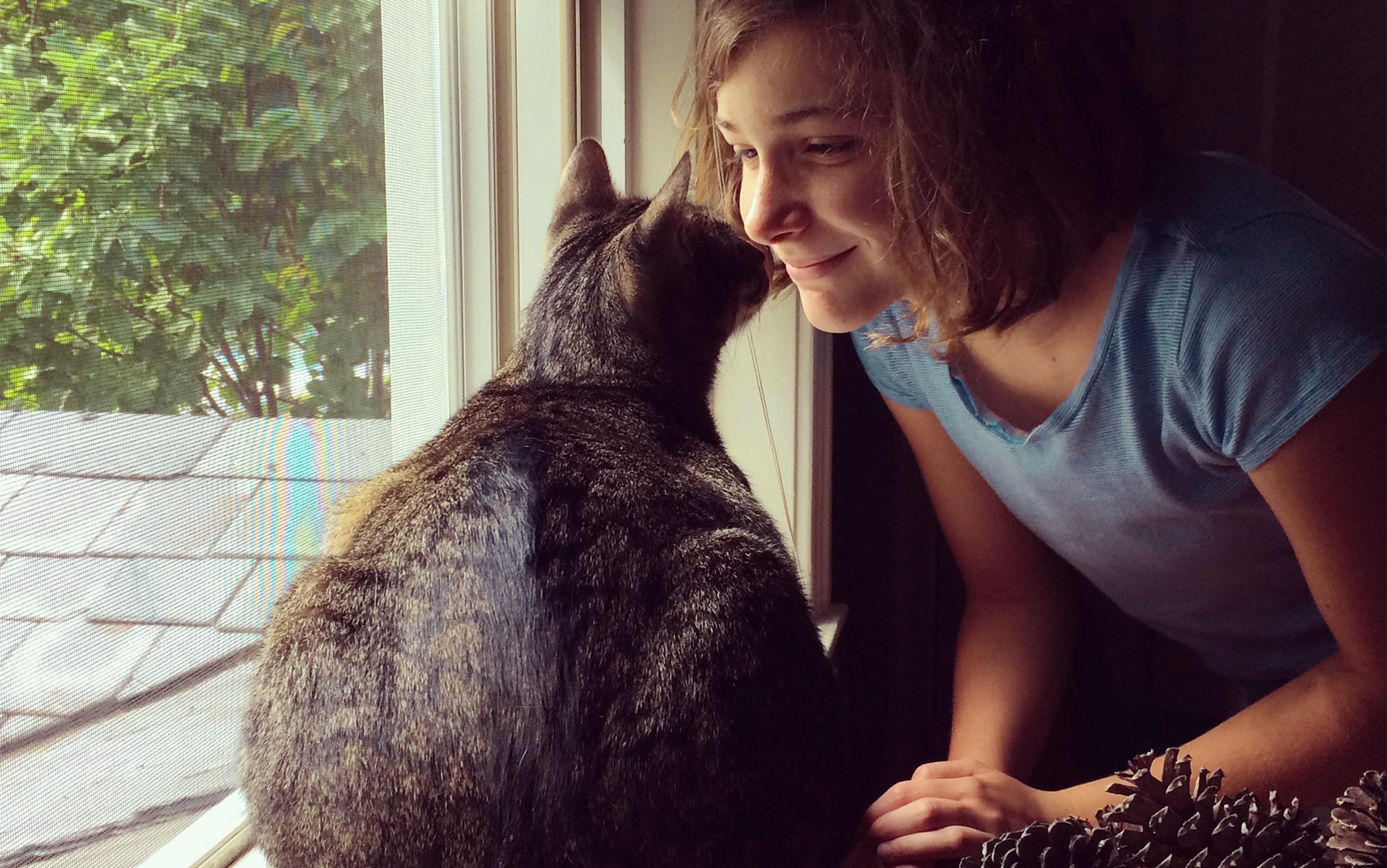Your nose is the best biosensor on the face of the Earth. This claim must sound counterintuitive since the sense of smell has acquired a rather poor reputation over the past centuries. Philosophers and scientists alike have only rarely singled it out for close study. The Enlightenment philosopher Étienne Bonnot de Condillac remarked dryly in 1754 that: ‘Of all the senses, it is the one which appears to contribute least to the cognitions of the human mind.’ Charles Darwin was not alone among scientists in considering smell a primitive system with reduced sophistication in humans. But are these ideas grounded in fact, or merely based on anti-olfactory prejudices passed on from generation to generation?
Recent scientific advances have debunked several myths about smell. First, human olfactory physiology is not in evolutionary decline. In 2017, a review in Science finally set the record straight by analysing contemporary research in olfaction. Although smaller in proportion to overall body mass, the olfactory bulb (the first cortical structure of the olfactory pathway) in humans has just as many neurons as in rodents. Further, the bulb is one of the most densely populated neuronal areas of the brain. It thus depends on how you measure size and define proportions.
Second, the sense of smell continues to be important to human cognition and to culture. Cross-cultural studies about language use have shown that other societies, such as the Jahai and Maniq in Southeast Asia, have extensive odour vocabularies and rites. Likewise, in the Western hemisphere, the fragrance industry has been successively expanding. In the United States alone, scented products generate more than $25 billion annually (ranging from perfumes to detergents, all kinds of creams and body products, up to scented trash bags).
Increasingly, loss of the sense of smell is being treated as a serious harm in clinical settings. Besides, the sense of smell is key to flavour perception. Indeed, most of what you perceive as the taste of food and drink is actually smell, being caused by volatile chemicals travelling from the cavity of your mouth through the open space of the pharynx up to your nasal epithelium. And there’s no way around it: the spice trade, with its growth following the Silk Road, has shaped the modern global socioeconomic landscape as much as – if not more than – philosophical discussion on reason and morality. It is surely now time to rethink our assumptions about the sense of smell, and its psychological and philosophical implications.
Instead of being ‘the odd one out’, smell is not only better than we think, it also allows us to revisit the relation between the world and our senses.
How good is your sense of smell, really? The human nose has been measured to detect minuscule amounts of molecules in complex chemical mixtures. Humans can sense the presence of particular odorants (smelly molecules) in dilutions of less than one part in several billion parts of air. Take the case of corked wine, which is primarily caused by the compound 2,4,6-trichloroanisole, in short: TCA. Although sensitivity to this compound varies between individuals, the threshold for its detection lies in the 10 to single-digit parts per trillion. To put this into perspective, as little as one ounce of TCA could contaminate 7.5 billion gallons of wine, which was the entire world’s wine production in 2018. Your sense of smell is not bad but strikingly accurate. So why haven’t we noticed?
You are immersed in an invisible multiverse of chemicals. Literally everything smells. The room you are in right now smells. Your neighbour smells (no offence!) Your clothes smell and, yes, you are also smelly. All of these odours are caused by several hundreds of volatile airborne molecules. The reason why you are seldom aware of this chemical blast of information around you is straightforward: your nose is actually a bit too good at its job for your brain to handle. If your mind was consciously processing all the molecular information that your nose picks up, without any break in its conscious awareness, you’d soon agree to a lobotomy just to ease your mind.
Why did the nose evolve to be so sensitive? Most of the molecules you smell could kill you in high enough concentrations, in addition to your chemical environment changing constantly. Humans, in particular, move habitats a lot. Their sense of smell thus needs to be fairly sensitive and flexible to measure the largely unpredictable chemical constituents of changing environments. So it’s good to have such a fine-tuned instrument monitoring the fluctuating chemical concentrations in your surroundings. It’s just not helpful to be aware of its workings all the time. Sitting in the backseat of conscious awareness, we simply don’t pay much attention to what the nose knows. Olfaction further does not fit well in traditionally visuocentric understandings of the nature of perception.
Smell is commonly thought to be a highly subjective sensation, especially in comparison with vision. In contrast with the things we see, we often are unable to agree on the quality of a smell, what it is or what it’s like. The same smell can cause diverse reactions among individuals, eliciting different qualitative descriptions as well as opinions about whether they find an odour equally pleasant or unpleasant. But smell is not as subjective as you think. Of course, human responses to odours vary substantially. Even the same person routinely experiences the same odour as markedly different depending on the context.
It makes a difference if I tell you that what you perceive is the odour of Parmesan or vomit
But such variability is not the same as subjectivity. Subjectivity implies that the reason for experience is not based on causes of the external world but exists only in one’s mind. A subjective perception does not possess reality beyond a subject’s experience, and it has no truth conditions set in the objective material reality of the world. But with olfaction there is an objective basis in which a particular variation is grounded. Smells only appear subjective, given that the same physical stimulus can evoke so many different perceptual interpretations. But these seemingly individual expressions can be explained by causal factors and mechanisms.
What you pick up as the scent of a molecule is contingent upon several factors – calling smell ‘subjective’ covers up the complexity of these causal factors.
One of these factors is the context of exposure, what is sometimes labelled your ‘mental set’. You don’t perceive smells in cognitive isolation. Contextual cues prime your sensitivity toward specific features in olfactory perception. When you smell a mix of isovaleric acid, for example, it makes a difference if I tell you that what you perceive is the odour of Parmesan or vomit. The effect of verbal cues on odour perception has been studied with a series of odorants. Typically, identical odours presented with different verbal labels were experienced as different in quality. Such conceptual shifts in perception do not reveal an error of your nose. This kind of switching is possible because Parmesan and vomit both contain isovaleric acid. The olfactory stimulus is fundamentally promiscuous – in the sense that the same volatiles can emanate from several kinds of objects and are part of many different complex odour mixtures. Consequently, you can form multiple mental associations for the same physical stimulus. That is why the context of your encounter with an odorant inevitably determines what ‘kind of thing’ you will perceive its odour to be.
Another factor is your background physiology when you experience a smell. Are you hungry or hungover, tired or excited? The physiological and affective state of your body ultimately shapes how you perceive an odorant. Consider the aroma of coffee, which contains several hundreds of different volatiles. None of these individual components in isolation smells of coffee; it’s a blended sensation. One compound in coffee aroma is indole. On its own, indole has a strong and characteristic faecal smell. Yet you won’t perceive it in the overall coffee aroma – unless you are a pregnant woman. Pregnancy alters your sensitivity toward specific components that can act as potentially harmful contaminants. Pregnancy is a clear example where sensitivities to odours can differ between people. Other, less obvious and less visible, cases exist, too. Consider androstenone, a pig pheromone, that people perceive quite differently. To some, it smells like urine, and to others like body odour (often noted as unpleasant). Others find androstenone has a woody and even a vanilla or floral note (experiences here are considered more pleasant). This astonishing variety in the perception of the same odorant’s quality effectively corresponds to differences in the sensitivity of your olfactory receptors.
Varying sensitivities to odorants, including androstenone, have notably been linked to genetic differences in the olfactory receptor repertoire of people (most prominently in a recent series of studies). To be sure, diversity of olfactory receptor genetics is not the only causal factor explaining the variations in sensitivities to odorants. Other factors include a person’s familiarity with an odour, as well as age and sensitivity training. Nevertheless, genetic diversity is a principal cause of perceptual variation among people. Moreover, it is a fairly discrete and localisable cause. A single genetic mutation near the olfactory receptor gene OR6A2, for instance, was shown to be responsible for the aversion that some people have towards cilantro (coriander) – individuals with this particular mutation experience the herb as soapy and pungent instead of fruity and green. Variability in people’s perceptions of odour is not merely something in their heads. It’s in their genes, too.
These are just some examples of the complexity of real causes that undergird differences in how people experience smells. There is nothing mysterious or obscure, capricious or arbitrary about human olfaction. All of these differences in the perception of smells between people can be explicated to rest on generalisable principles or mechanisms.
The sense of smell is providing reliable access to reality because its biological and psychological mechanisms allow its perceptual responses to be highly variable and adaptive. Your nose is tailored to measure the world as calibrated by your mental life and physiological conditions. Perceptual reactions to smelly molecules are variable not because they represent subjective whims but because small changes in the chemical composition of the environment are what the olfactory system evolved to evaluate, objectively – and pretty reliably so.
The sense of smell now offers an excellent opportunity to overhaul the notions of objectivity and subjectivity in perception. Orthodox theories about the senses have rested on the paradigm of vision. Visual object perception conveys the impression that we should be experiencing material reality via the same lens and as the same sort of things, regardless of a subject’s perspective. Variations in experience here are mostly judged as deviations. So how would this understanding of the perceptual access to and representation of reality alter if vision was not taken as the paradigmatic system?
Olfaction and vision fundamentally differ in how the physical stimulus is coded and how their perceptual representations are computed by their sensory systems. These processing differences explain why olfaction affords greater variation in the perceptual interpretation of the physical stimulus. One might wonder how human olfaction could provide us with objective access to reality despite such prevalent variation in perception. The alternative is to suggest that it provides us with access to reality because of such variation. Indeed, it might be easier to fool your eyes than your nose!
Perspective invariance in vision makes the system prone to targeted illusions
Why do we generally trust our eyes? Visual object recognition seems intuitively more objective than odour perception since it builds on perspective invariance. Regardless of the angle from which you approach an object, you can recognise it as being the same thing and of the same category. A ball doesn’t usually transform suddenly into a square or triangle when you approach it from the left rather than the right side. It will likewise continue to look like a ball if you paint it in another colour or spritz an odour at it. The same cannot necessarily be said about olfactory images in their ephemeral and fluctuating appearance. Contextual cues (such as a word or an image) can profoundly alter the conceptual content of an odour image in an instant – for example, from Parmesan to vomit, and back again. With visual imagery, it is usually only in the case of optical illusions or puzzle pictures such as the duck-rabbit that such radical shifts of perception occur.
Now, the intriguing and initially paradoxical point about perspective invariance in vision is that it makes the system prone to targeted illusions. You can systematically deceive your visual system based on its own causal architecture.
Visual object recognition is the result of highly specialised processes from your retina to the visual cortex. These processes, as part of the so-called edge-detection pathway, encode spatial features such as edges and boundaries, orientation, directionality and extension. These features, in effect, are a product of the specific hierarchical integration of neural signals over several stages in the visual pathway. Based on the causal architecture of the visual system, these features end up as viewpoint-invariant assemblies, such as T-junctions (defining the boundaries of objects) and Y-junctions (marking areas where surfaces join). The neural computation of viewpoint invariant features, such as the ones shown in Figure 1 below, allows your visual system to establish regularities in perspective. One such regularity involves the construction of parallel structures.

Figure 1: Stable object recognition via the coding of viewpoint invariant junctions in the visual system
Optical illusions routinely piggyback on the viewpoint independence of spatial features in visual processing. Take the Ames room in Figure 2 below, a visuospatial illusion parasitic on the construction of parallel structures by the visual system. The Ames room is shaped like a six-sided convex polyhedron that, when viewed through a peephole, looks like a cube. Here, the distance of one corner of the room is misjudged: while farther from the observer, it’s not perceived as such. If you have a person standing in the distant corner (person A), that person seems dwarfish in comparison with an equally sized yet gigantic-looking person closer to you (person B). This trick works because the illusory perception and the real arrangement overlap in their spatial projections as detected by the visual system.

Figure 2: The optical illusion of the Ames room. Image courtesy of Wikipedia/Alex Valavanis
Optical illusions such as the Ames room are reproducible, as their effects are a consequence of the underlying sensory mechanisms. As early as the 19th century, the German physician Hermann von Helmholtz noted that the cause of visuospatial illusions is that two different physical realities can cause identical patterns in the retina. Illusions provide us with examples of how our visual system can be fooled based on its distinct causal set-up.
By comparison, it is much harder to trick your nose. Certainly, olfaction is much more variable in its perceptual expression than vision. But this variation doesn’t mean that the nose has been misled. Olfaction simply does not work analogously to the visual system. Crucially, feature coding in smell is not viewpoint-invariant. On the contrary, the causal principles of the olfactory system facilitate a cue-dependent interpretation in the computational integration of its neural signals. This inherent variability is of greater advantage when it comes to judging a contextually highly promiscuous and often unpredictable distal stimulus. The same odorant in different chemical environments can change its meaning also because you never smell chemicals on their own. Instead, you encounter heterogeneous mixtures of chemicals. (The activity signals in the epithelium caused by complex mixtures aren’t neatly separable into their components any more, once they hit the receptors. But that is an intriguing causal story for another occasion.)
Variability in smell perception really isn’t mysteriously subjective and erratic, after all. Here, we heard of two chief capacities that distinguish your nose as a most powerful and reliable biochemical sensor. The first capacity is its remarkable precision. Your nose is highly sensitive and accurate in the detection and discrimination of the most minute amounts of chemicals in a solution (such as traces of TCA in corked wine). The other capacity is its flexible repertoire and range of responses when the context of exposure requires it. This repertoire involves the identification of odour quality. The task of smelling concerns the evaluation of a contextually promiscuous stimulus in its plurality of perceptual interpretations. The function of olfaction, therefore, is not object invariance as in vision. That the same odorant can have more than one perceptual interpretation thus is not a sign that your olfactory system has been hacked. Rather, the same odorant in different chemical contexts is disposed to have varying behavioural affordances.
Paradoxically, it is its variability and contextual situatedness that often make your nose harder to fool than your eyes. Think about it. Why assume that perspective invariance is the criterion of objectivity? What characterises objectivity as the hallmark of reality is not the appearance of things, which is changeable. Instead, we need to understand the underlying causal principles that give rise to this appearance and its variability. Smell appears fickle only without a sufficient understanding of its causal mechanisms.
The scientific study of the senses, down to the molecular and cellular level, invites us to revisit the basis of our inherited philosophical assumptions about perception. Received philosophical analysis approaching the objectivity of the senses as ‘one percept matching one stimulus’ proved an ill-defined artifact of a prescientific intellectual tradition. It obscures our understanding of smell. It bypasses a lot of other sensory sensations, including the hidden senses of proprioception and interoception. And it even obscures genuine understanding of vision. In effect, it is their causal principles and mechanisms – not some naive input-output pairing that treats the sensory system as a black box – that determines how our senses grant us access to reality. To understand perception across all senses, including perceptual constancy as well as variation, requires a much more detailed look at the actual processes that connect the world with our mind. Only that way might we get to understand both.






